Here we will discuss the dine and dash phenomenon and strategies for effective management, what happens if you dine and dash and what you can do to better defend against it.
What is dine and dash?
What is a dine and dash? The meaning of the phrase dine and dash revolves mostly around someone leaving a restaurant without paying after having received the restaurants service. The phrase can also be used in many other contexts regarding leaving without paying for service after getting the service.
While restaurants are the most commonly associated locations for dine and dash incidents, other establishments where services are provided before payment could potentially experience similar situations. Here are some examples:
- Bars & pubs
- Delivery services
- Hotels and lodging
- Gas stations
- Movie theatres etc.
There are many reasons why someone might dine and dash, but the result is always the same. The establishment loses out on the cost of the service. For a restaurant specifically, it is the lost profit from a paying customer at the table and the servers losing out on deserved tips.
In this article, we give you practical ways to deal with dine and dash incidents.
To see how Solink can help reduce theft in your restaurant, sign up for a demo today.
Interesting Statistic
Most restaurants have experienced a dine and dash at some point. In fact, one study suggests that 5% of people have dined and dashed at some point in their lives. That’s a startling statistic, placing dine and dashes as one of the most prevalent forms of theft and worse, they are quite undetectable unless you know it’s happening or it’s being looked for.
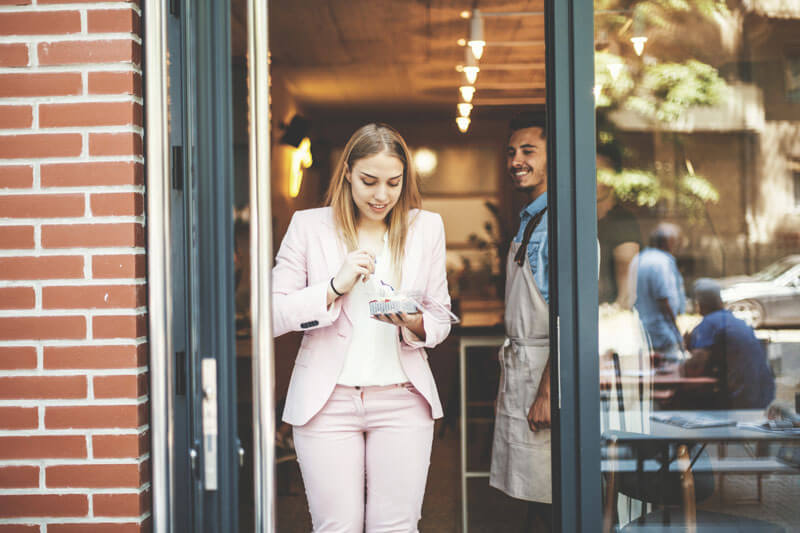
Such incidents not only pose immediate financial losses to establishments but also contribute to a broader climate of mistrust and security concerns within the hospitality industry. This startling statistic places dine and dashes as one of the most widespread forms of theft, underscoring the importance for restaurants to implement robust security measures and staff training to mitigate risks and protect their bottom line.
Two Types of dine and dash
We’ll get into all the reasons people dine and dash below, but let’s look at two main examples: a planned dine and dash and a spontaneous dine and dash.
Planned dine and dash
This is when a group of friends decide to dine and dash beforehand. Using an example, they go to a restaurant on a busy street for lunch. When their meals are nearly complete, they order another round of drinks. When the server is busy at the bar picking up their drinks, they all leave the restaurant in a group.
Spontaneous dine and dash
This scenario has two people who go out for dinner and drinks. They continue to drink while watching the game on the TV and end up consuming more than they planned. When they ask for the bill to settle their tab, they realize they’ve spent a lot more money than they planned to. Not having the money to cover the bill, they decide to dine and dash.
Share video in seconds
Learn how easy it is to share video with law enforcement in our self-guided tour.

Why do people dine and dash?
There are many reasons someone would dine and dash. Most of them are out of your control as a restaurant owner, but some of them you can mitigate.
Here are some reasons a person might walk out on the bill at your restaurant:
- Some people are looking for excitement and will dine and dash for the thrill of it.
- When the bill arrives, the customers realize they spent more money than they have and decide to run. Some customers also knowingly eat somewhere that they can’t afford, making their dine and dash premeditated.
- The customer is unhappy with their meal or service and feels they are justified in leaving without paying.
- The server is taking too long with the bill and the customers decide to leave out of frustration and a sense that they will be able to get away with dining and dashing because they think the servers are either busy or lazy.
- Some people hear about their friends dining and dashing and decide they want to try it. This can even lead to a business gaining a reputation as a place where dining and dashing is possible.
What you should and shouldn’t do when dining and dashing occurs
We’ll get into ways you can prevent dine and dash incidents below. First, let’s look at what you should and shouldn’t do if your restaurant falls victim to a dine and dash.
What to do when a dine and dash happens
Depending on your jurisdiction, dining and dashing may be a civil or criminal act. Whichever it may be, you should still call the police. Even in places where a dine and dash is a strictly civil case (called a “contractual debt”), the police can provide assistance in both retrieving the fair payment and creating a case report.
If you know who dined and dashed, the police can also be of assistance in barring the person(s) from entering your establishment again in the future.
After filling out the report and discussing the event with the police, be sure to share all the information you can with them. The Solink platform makes it easy to save and share clips with the police by email. With video evidence of the event, the police are far more likely to be able to resolve the case.
After dealing with the police, consider reaching out to the local community and sharing the details of the event. Find out if others have had similar experiences recently and see how you can work together to keep all of your restaurants safe.
Can you chase down ‘dine and dashers’?
For most businesses, the general protocol advises against engaging customers outside of the establishment. Pursuing someone who has not paid entails risks, and it’s improbable that you’ll receive backing from the manager or owner if you opt to do so.
If you do manage to apprehend someone, you have the option of a “citizen’s arrest,” after which law enforcement can intervene. Providing the person’s license plate number enables the police to conduct a DMV search.
Using the incident as a learning tool
Finally, consider the dine and dash event a good reason to brush up on employee training. First and foremost, you don’t want your employees to chase down dine-and-dashers because that could lead to a violent encounter. Next, make sure servers are promptly delivering their bills, always keeping an eye on their tables, and know the signs of someone ready to dine and dash.
What not to do when a dine and dash happens
While a dine and dash incident is a good reason to do some follow-up training with your servers and bartenders, you don’t want to blame them for the incident or accuse them of facilitating the theft in any way.
Although police involvement is necessary and discussing it with the local restaurant community is advised, you don’t want to be too public about the incident. A restaurant that advertises a recent dine and dash might attract more dine-and-dashers. You might also see a dip in sales if people are worried about their safety in your establishment.
Depending on the local jurisdiction, you may or may not be able to make the server pay for the dine and dash. In Ontario, Canada, for example, until 2015 restaurants could require servers to pay for theft events including dine and dashes, but only out of tips and not wages. Since 2016, it is no longer legal for restaurants to force employees to pay for theft events in Ontario, Canada. Even where it is legal, it might not be in your best interest long term to financially penalize your servers for a dine and dash, especially if you are finding it difficult to hire new employees.
Find what your looking for in seconds
Save hours sifting through video to find what your looking for in seconds with motion search in our self-guided tour..
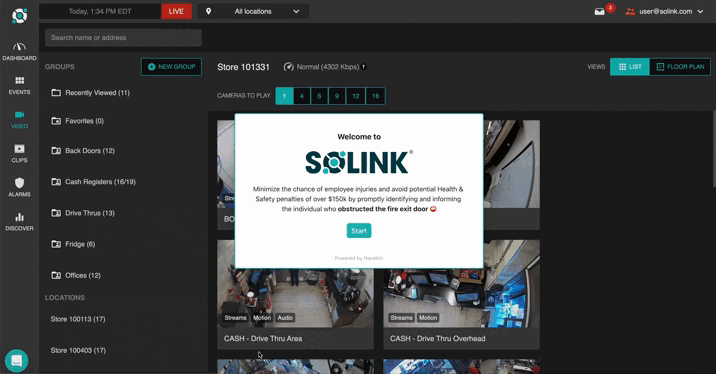
12 ways to prevent dine and dash events
Not every dine and dash can be prevented. However, there are ways to mitigate the risk of someone leaving your bar or restaurant without paying. Here are 12 ways you can prevent dine and dashes.
1. Install security cameras in your restaurant
Business security cameras are just the start of a complete restaurant security system. However, well placed cameras, some more visible than others, will provide you with both the recourse to identify those looking to dine-and-dash and a strong deterrence to such criminal activity.
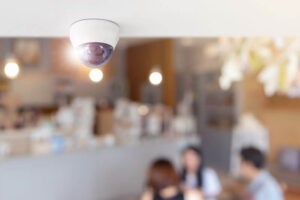
2. Change your floor plan to give diners one way out and improve the sightlines
If you have a large floor space with many private nooks, then you are making it harder for your servers to keep track of their tables and patrons. Wherever possible, try and adapt your restaurant floor plan to make it easier for your servers to see their customers. Furthermore, especially in larger restaurants, consider placing point of sale (POS) terminals in each area of your restaurant so servers do not need to go too far to input orders.
When considering sightlines, don’t forget about your camera placement. They should provide good overall coverage of the business as well as clearer views of high-risk areas such as the POS and both sides of entrances and exits. Here’s a sample security floor plan for a quick-service restaurant (QSR).
One last point, use a single entrance for customers. That way anyone thinking about leaving without paying needs to go through one door. This will make it easier for servers to see it happening and the cameras to get good footage of the assailants.
3. Make customers pay in advance for their orders
This is not possible for a lot of restaurants. The idea of asking customers to order at the counter, pay, and then wait to be seated is not going to work for fine dining restaurants. However, for a fast casual restaurant (FCR) that has a counter for takeout orders, this is a great way to reduce risk and improve efficiency.
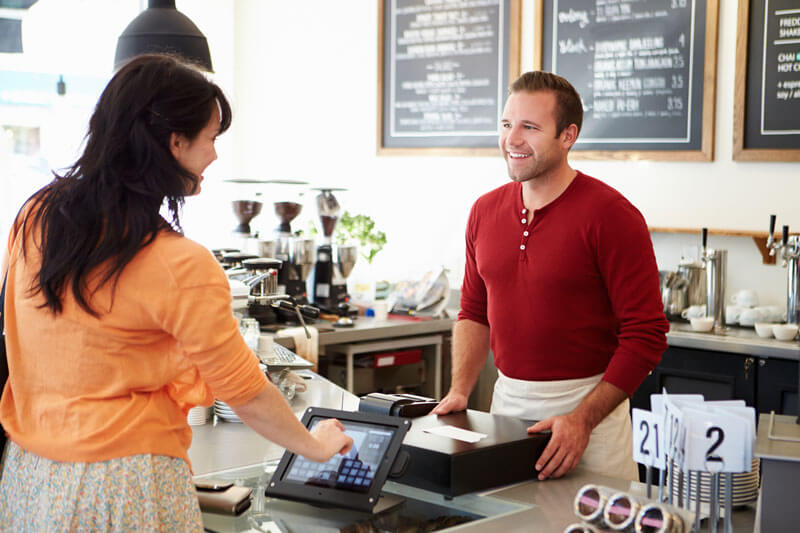
4. Pre-authorize credit cards for large groups
Even if you can’t institute counter service, consider asking a member of large groups to put a pre-authorization on their credit card so you, and your busy server, don’t risk missing out on a significant portion of your daily take.
5. Strive for friendly and attentive service
Friendly and attentive service is a must for any restaurant—your business depends on it. However, it is also something that makes it less likely someone will dine and dash. It eliminates the opportunity to flee without being seen. More importantly, it makes it harder to justify dining and dashing with a negative view of the restaurant and staff.
6. Increase your speed of service
Related to the previous tip, a faster speed of service makes it less likely that someone will get tired of waiting to pay and just leave. While speed of service is important throughout the meal, it can be especially irritating to wait for the check after asking for it.
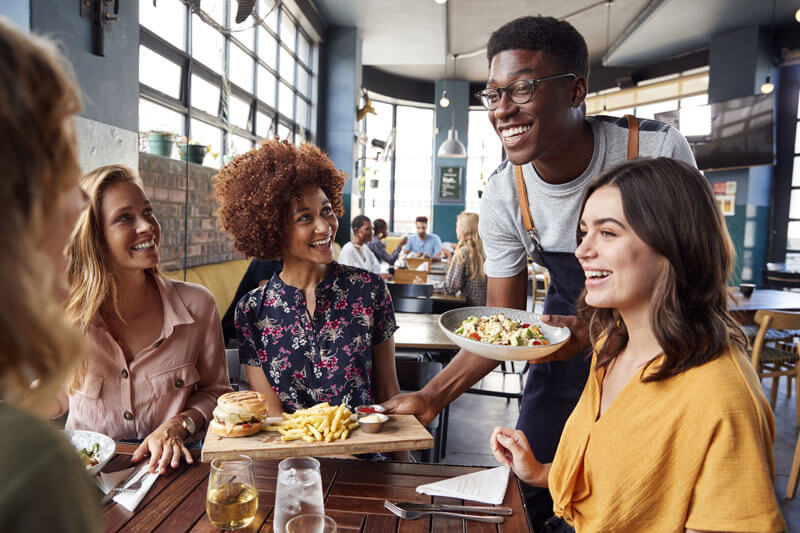
7. Upgrade to cloud video security
A commercial security system is more than just cameras. Security in your restaurant requires the full capabilities of a cloud video security system. By pairing video with the data coming from your other systems, such as your point of sale (POS), Solink gives you insights into everything happening in your restaurant or bar, from anywhere.
Motion Search, Camera Linking, and Save & Share make it easy to find, document, and send evidence of dine and dash events to law enforcement.
To see how Solink provides restaurants with integrated video security, sign up for a demo today.
8. Consider taking more reservations
When someone creates a reservation, they give you their personal details. A person is far less likely to steal if they think they will be caught, and if you know their name, phone number, etc., then you have all the information you need for the police to investigate.
Reservations can make it easier to schedule based on expected occupancy, forecast revenue, and prevent dine and dash incidents as well.
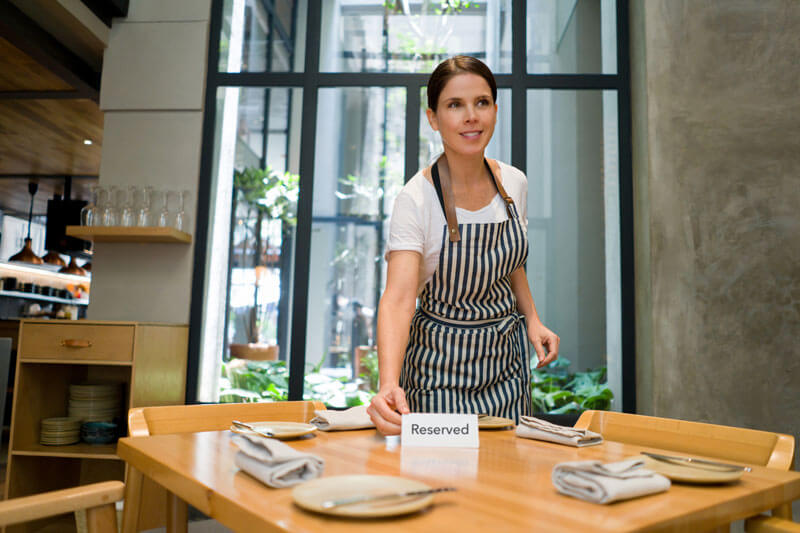
9. Post anti-theft signage
Security cameras work as a deterrent to theft. However, they have become so ubiquitous that some people just don’t notice them. There can also be the impression that no one is actually watching the footage. Placing stickers or signage on your doors and other prominent locations will reinforce that deterrence factor.
10. Make paying more convenient
As mentioned above under “Increase your speed of service,” when a customer has already enjoyed their purchase, they’ll be more sensitive to service issues during the payment process. If you don’t have a portable payment terminal yet, then consider investing in one.
If there’s consistently a line up to pay, you don’t allow split bills, or you add annoying steps such as email collection during the payment process, consider changing your policies. The last thing you want is for people to take that as an excuse to dine and dash.
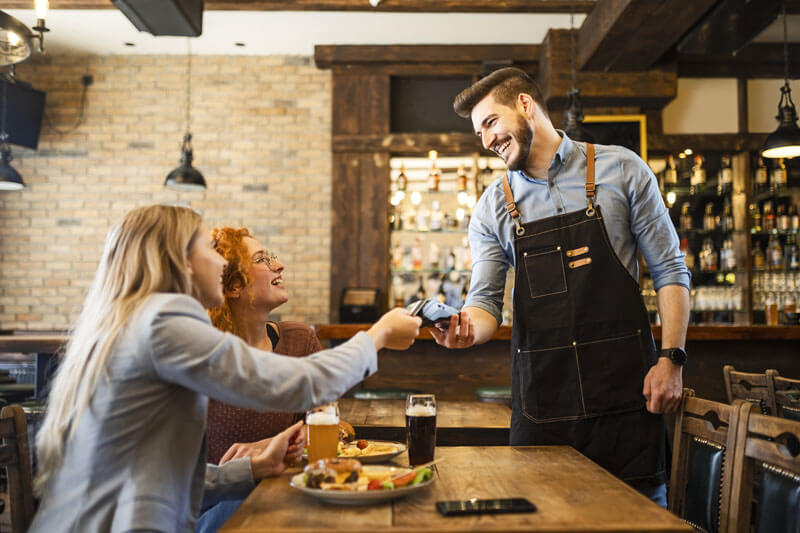
11. Ask for a credit card when starting a drink tab
Drink and dashes might be even more common than dine and dashes. Unlike a meal where most people have a good idea of what they will spend before entering the restaurant, a night of drinking can have a variable price tag. That price can also quickly balloon unexpectedly.
When you serve the first, or possibly second, round of drinks, consider asking to either take a credit card or put a hold on one. That way, if the night goes longer than expected, your customers won’t consider skipping out on the bill.
12. Hire a host for the front door
A host is not a security guard, and you should clearly tell your host to not try to stop someone trying to dine and dash. However, merely being by the door, making eye contact with people as they leave, will discourage many people from trying to leave without paying.
Share video in seconds
Learn how easy it is to share video with law enforcement in our self-guided tour.

Solink can help reduce the risk of dine and dash incidents
Dine-and-dashers have a variety of motivations and not all of them plan their crimes in advance. While you can’t stop every person who wants to steal from you, the right security system can make it less likely.
Camera linking, event- and motion-based search, and many other features make it easier to spot theft events. Solink also gives you the ability to share needed video evidence with law enforcement with the click of a button.
To see how Solink can reduce the risk of dine and dashes in your bar or restaurant, sign up for a demo today.

Solink stands at the forefront of security solutions, excelling in loss prevention and asset protection for businesses. Our content is rich in industry expertise and crafted to provide actionable insights and innovative strategies. We empower businesses to enhance their security systems, optimize operations, and protect their assets more effectively. Discover how our advanced cloud video management system can transform your security approach.
